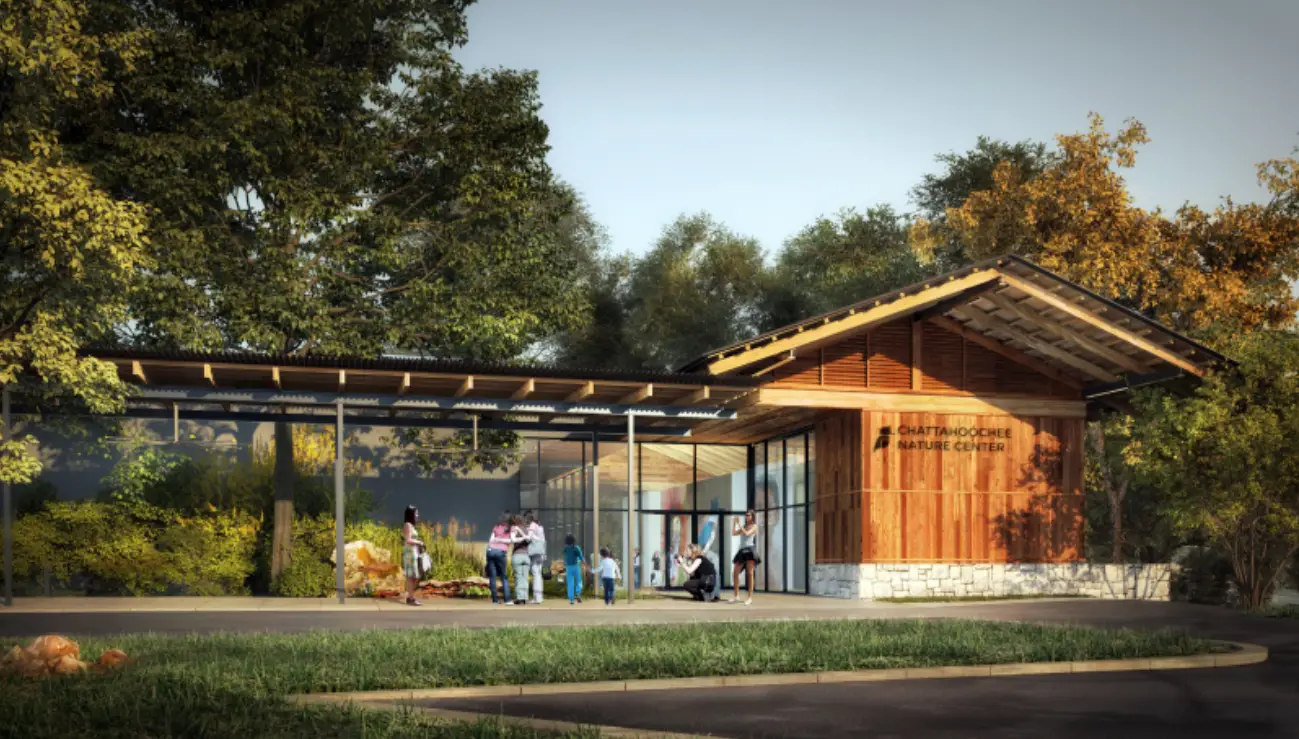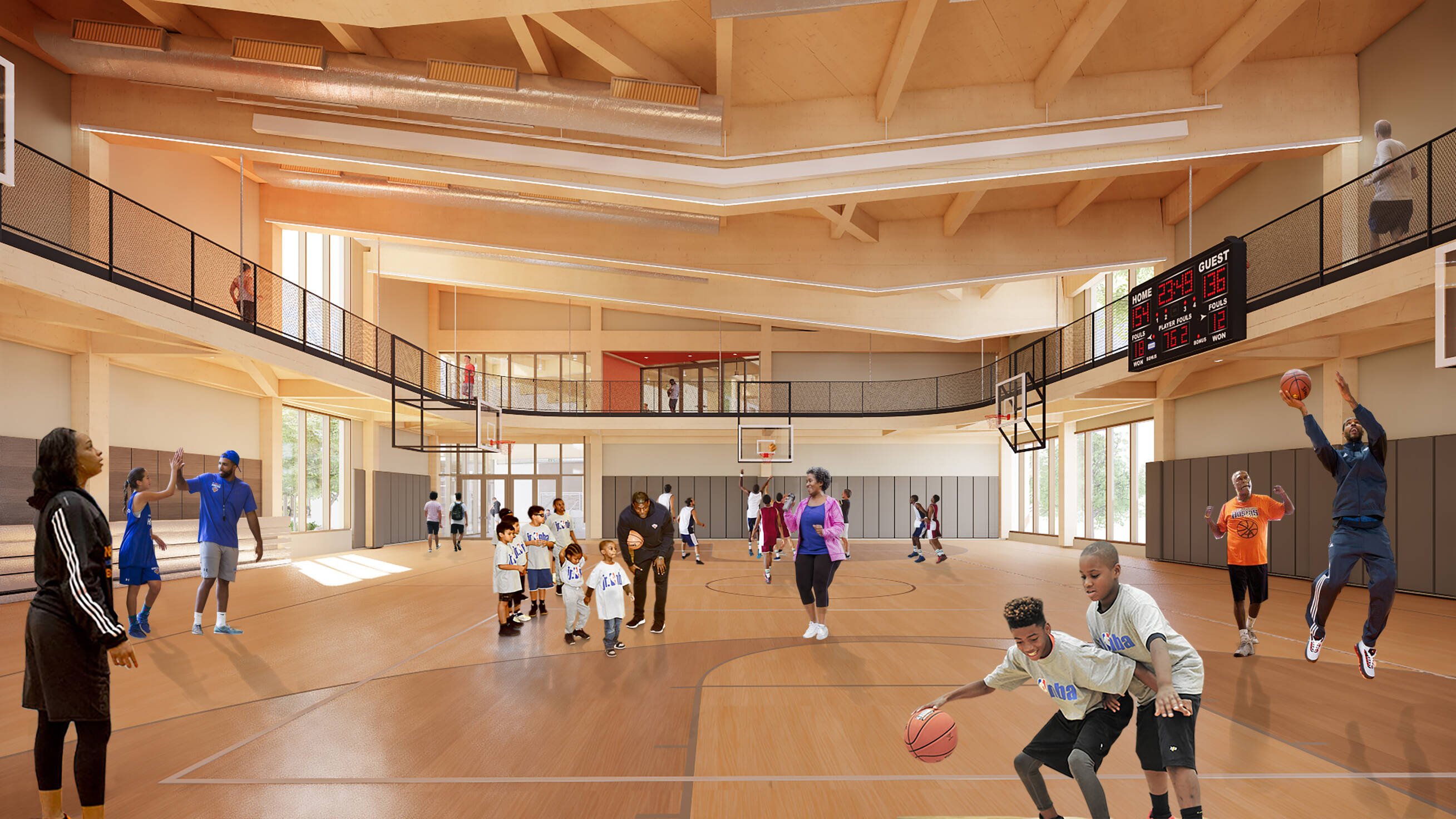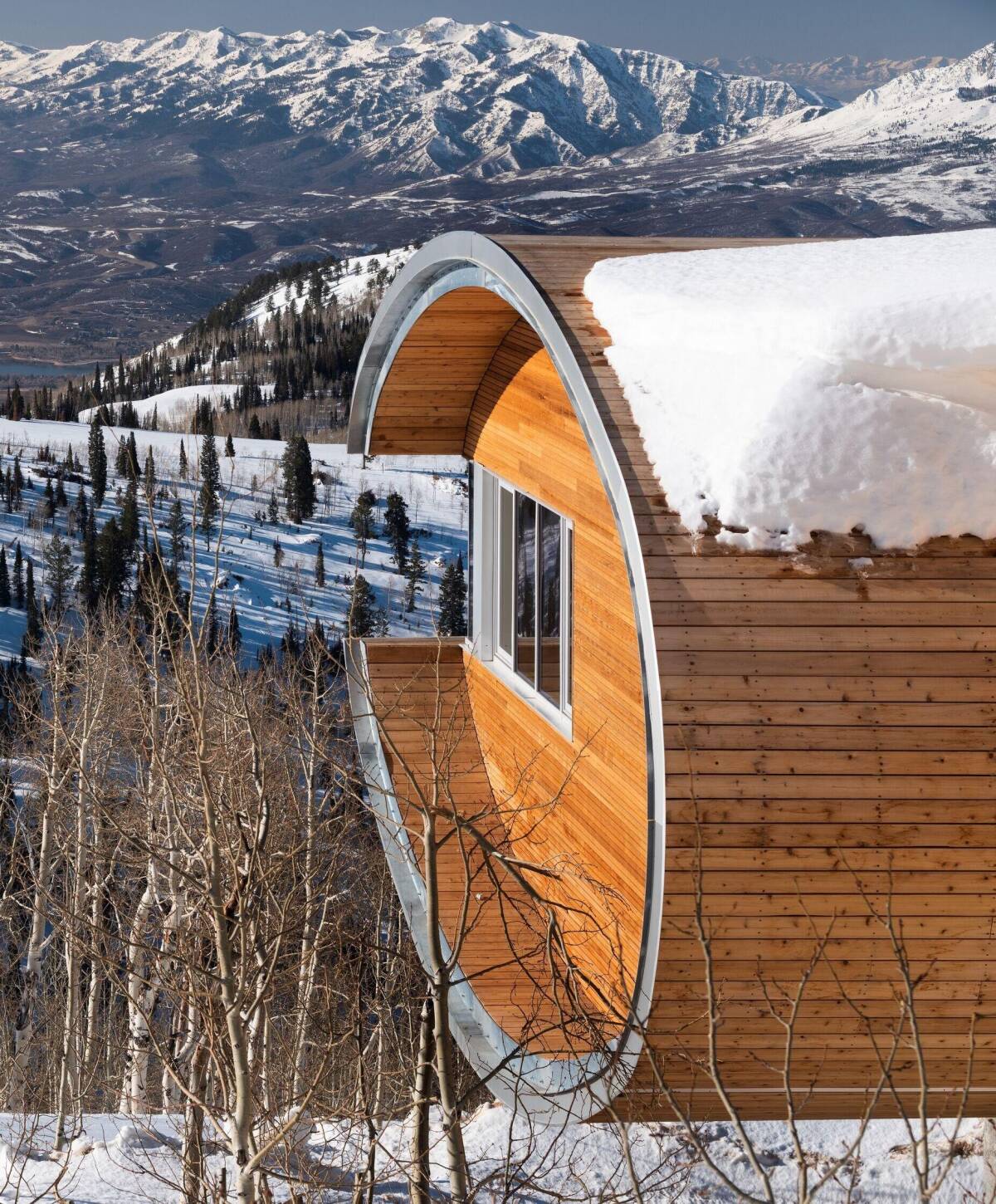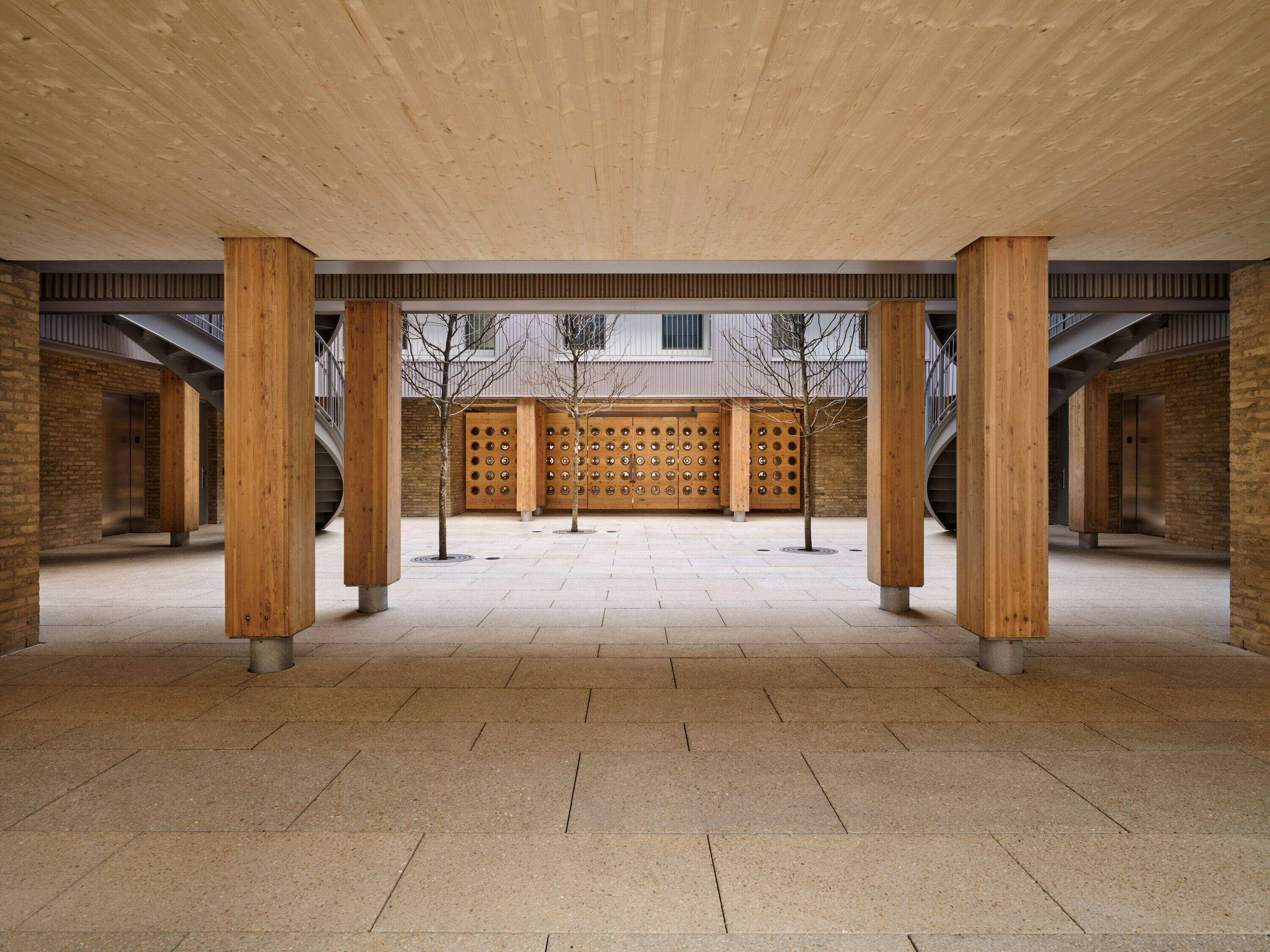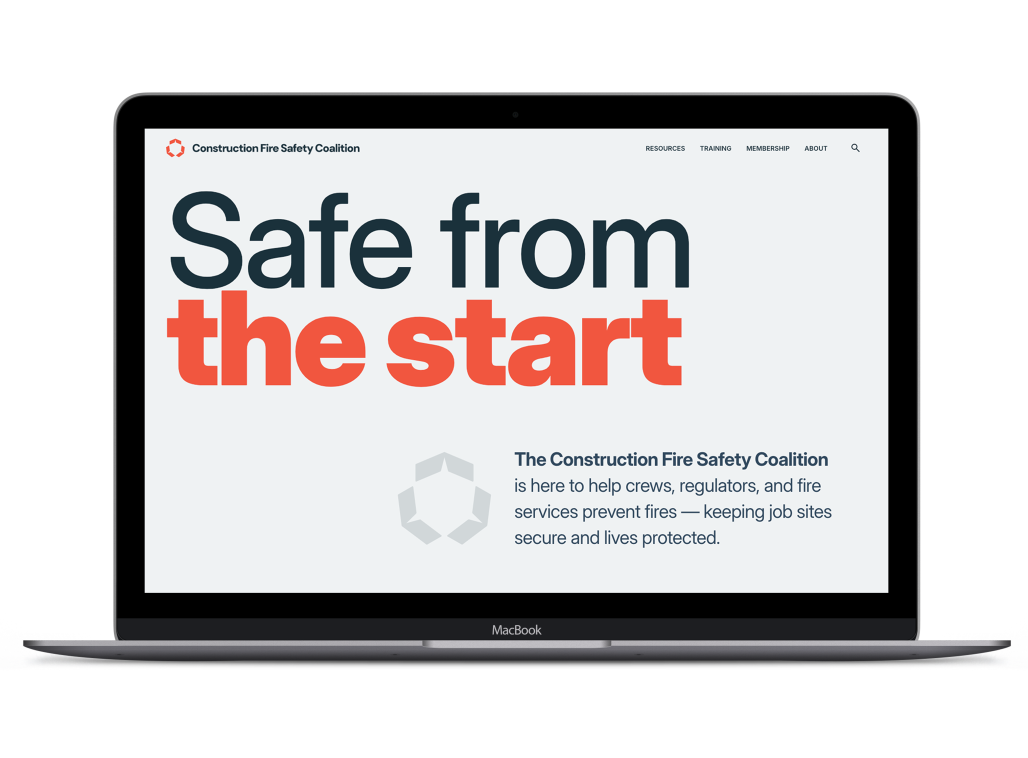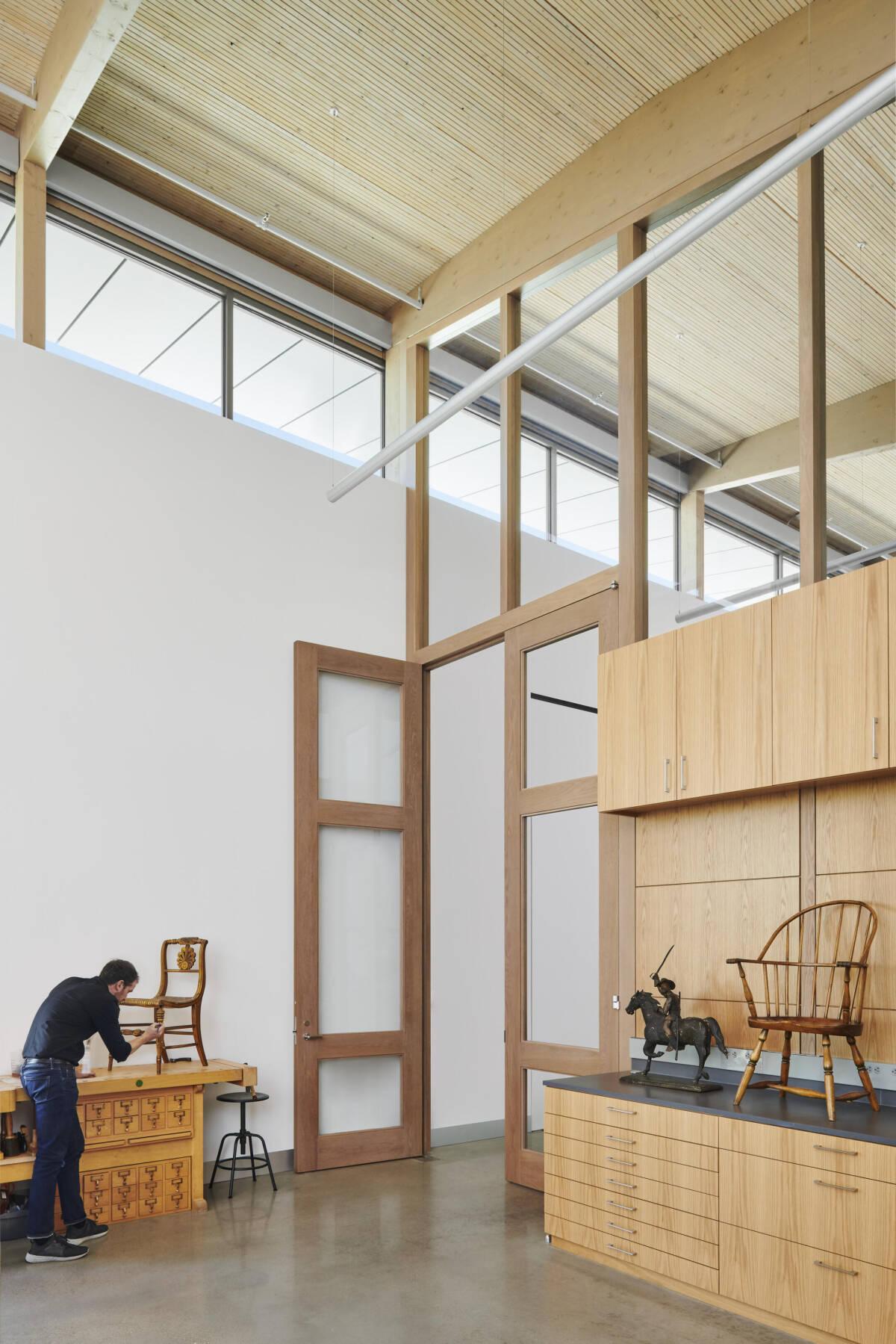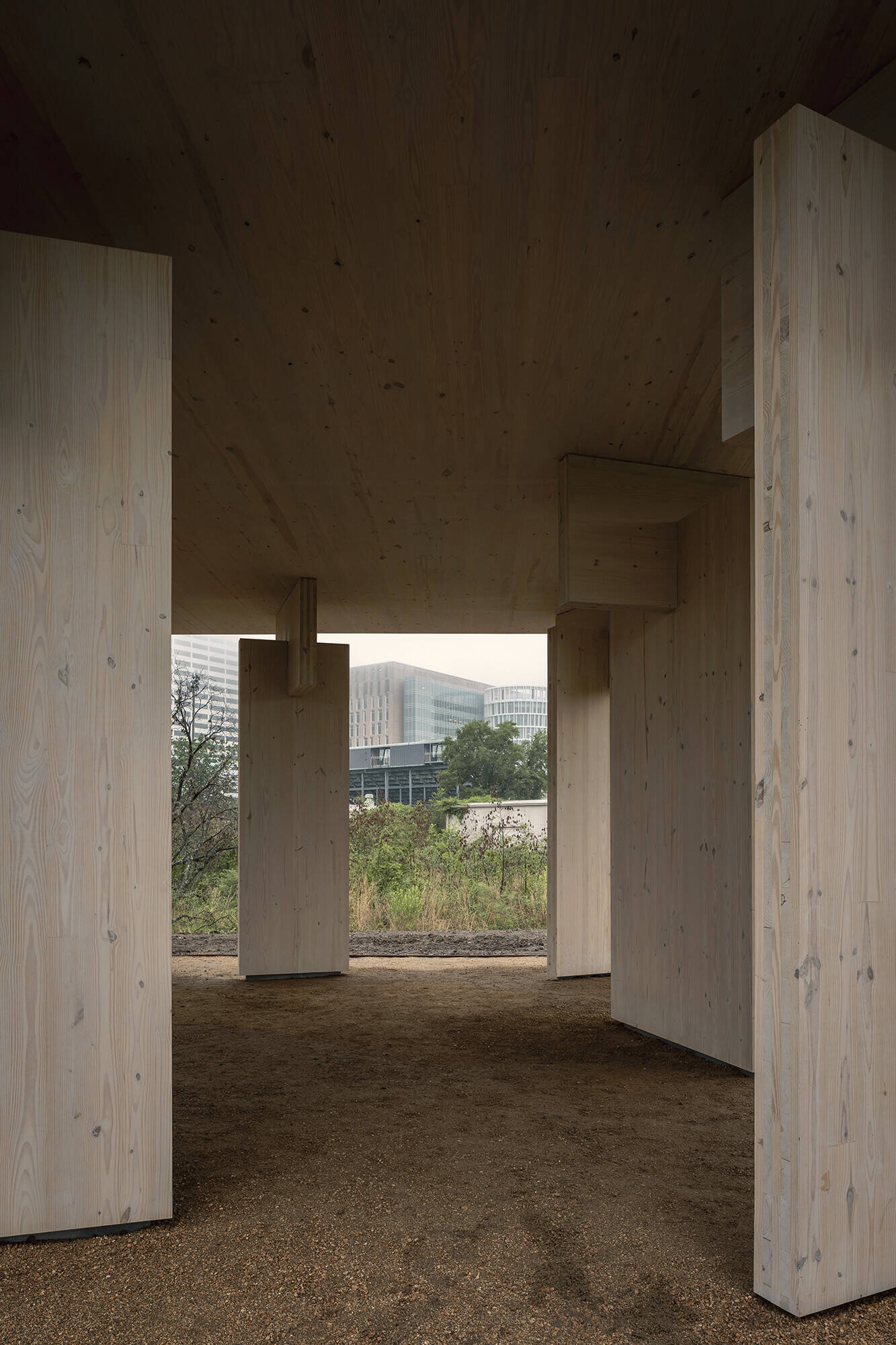DOWNLOADS
DOWNLOADS
EDUCATION
HIGHLIGHTS
WOODWORKS
HIGHLIGHTS
THINK WOOD
HIGHLIGHTS
AWC
HIGHLIGHTS
Q1 HIGHLIGHTS
SLB
Feature Story


Q1 HIGHLIGHTS
1,510 MM BF
2025 goal.



Georgia’s Mass Timber Accelerator, managed by the Georgia Forestry Foundation, is providing direct funding and technical support to three active projects. The accelerator launched a new call for applications and is expanding into key urban centers through its Mass Timber Hubs initiative. These educational hubs in cities throughout Georgia, developed in partnership with WoodWorks, aim to engage local design and construction professionals to share success stories, discuss lessons learned, and grow momentum ahead of the June 30 application deadline.
Building on these successes, the SLB is encouraging more cities to apply for funding and support to launch their own accelerators, positioning wood structural systems as a key solution for sustainable, scalable, and affordable development across the United States.
In 2025, the SLB is expanding its accelerator program initiative to drive innovation in wood construction with a focus on affordability and housing access. Building on the success of programs in Boston, Georgia, and New York City—launched in partnership with the USDA Forest Service—the SLB is now exploring collaborations with cities in Colorado, Pennsylvania, Oregon, and California, and in Washington, D.C.
In New York, two projects from the NYC Economic Development Corporation’s 2024 Mass Timber Studio have moved toward construction: the Walter Gladwin Recreation Center and a Brooklyn Public Library branch, both expected to break ground in 2025. A second round of applications for the program closed in April, and the SLB and program partners have reviewed and selected finalists. One of the finalists has been selected to construct 500 new mixed-income housing units on Staten Island, becoming one of the largest mass timber residential development projects with affordable housing in the entire country.
One finalist in NYCEDC’s Mass Timber Studio has been selected
to construct 500 mixed-income homes on Staten Island.
Rendering Credit: GF55 Architects.
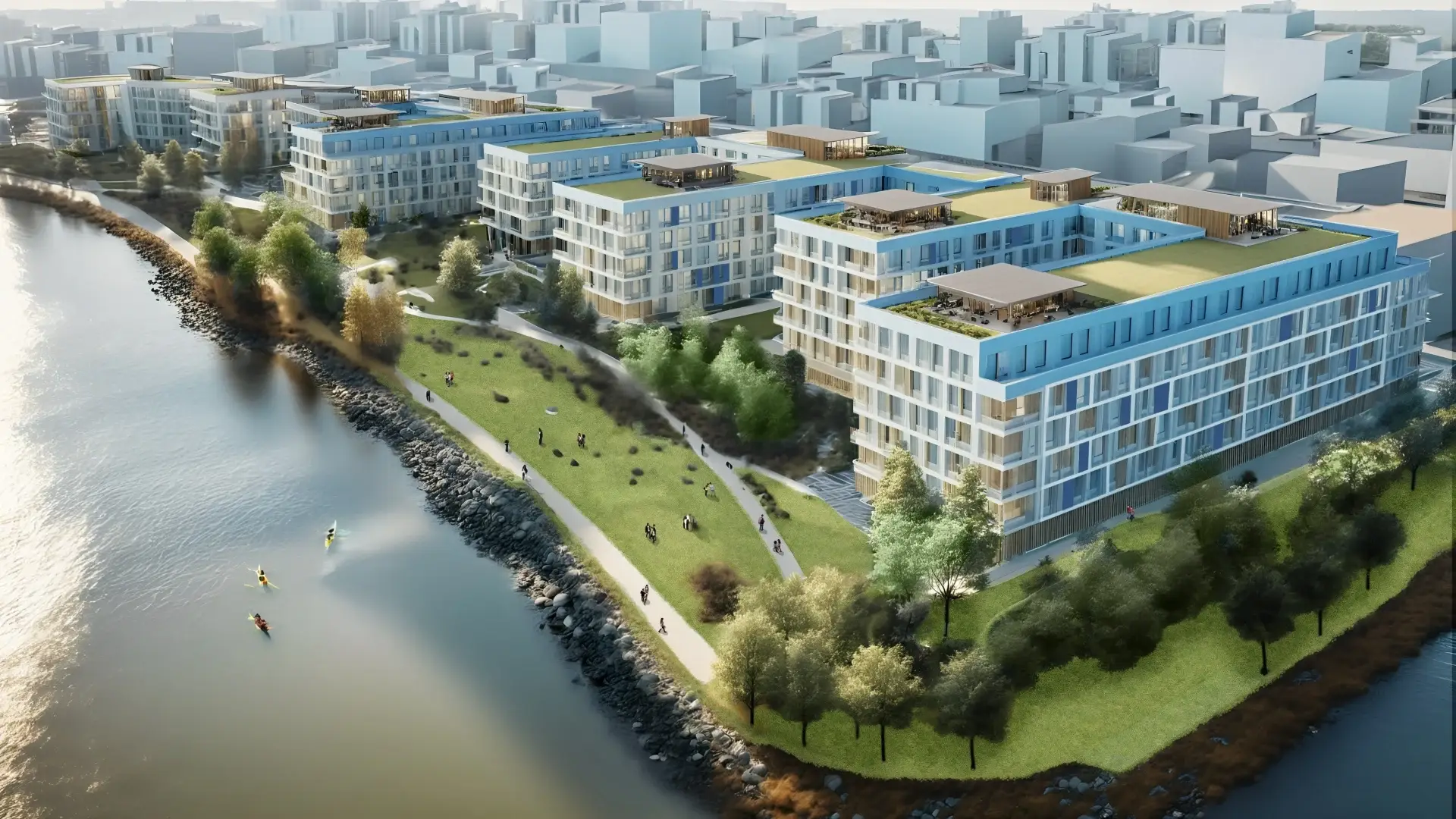
The Brooklyn Public Library Lots Branch, selected in the first round of NYCEDC’s Mass Timber Studio, is expected to break ground in 2025.
Rendering Credit: MASS Design Group and Marble Fairbanks Architects

SLB feature story
SLB Story 3:
Concrete Masonry Checkoff Updates


SLB Story 1:
K-12 Mass Timber Competition
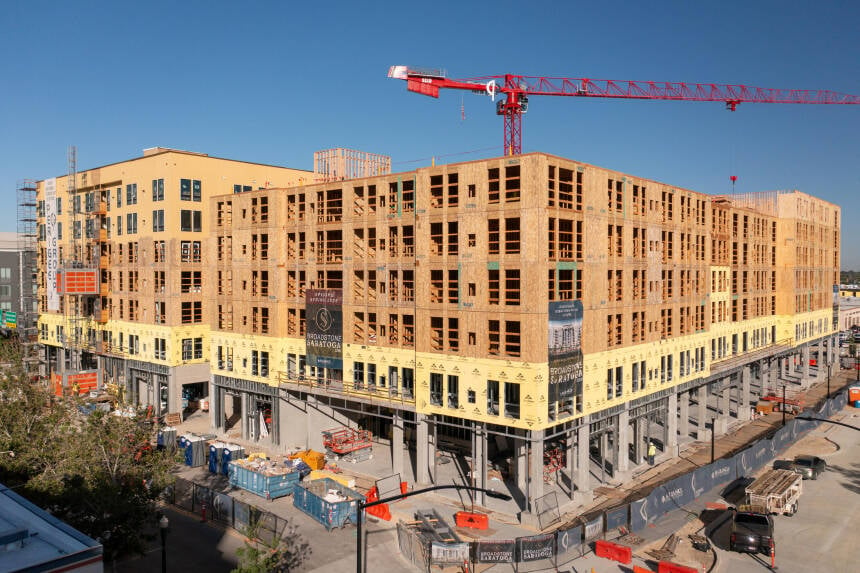
SLB Story 2:
Light-Frame Market Growth
Jump to these stories.
Want to read more SLB stories?
Community MusicWorks Center Architecture |
3SIX0 Architecture | Photo Credit: Warren Jagger Photography


At the 2025 International Mass Timber Conference, SLB Education convened a pivotal wood education roundtable aimed at expanding the role of wood design in architectural education.
A new SLB-funded research initiative at Princeton University is advancing the frontier of sustainable building through robotic wood construction.

Explores Robotic Wood Construction

SLB Education’s faculty development initiative is proving to be a powerful driver of wood design education in architecture, engineering, and construction management programs.
and emerging professionals with knowledge of and preference for wood solutions.

Community MusicWorks Center Architecture |
3SIX0 Architecture | Photo Credit: Warren Jagger Photography
SLB story 1
The SLB and USDA Forest Service’s 2025 Mass Timber Competition: Building Sustainable Schools has drawn 19 innovative project entries from across the country, signaling growing momentum for mass timber in the K-12 education sector. With $1.8 million in funding available—up to $500,000 per project—
the competition is designed to accelerate adoption, grow market share,
and showcase mass timber’s potential to transform how schools are built.
By focusing on classrooms, libraries, daycare centers, and other K-12 facilities, the program targets a high-demand sector where wood’s current market share is low, leaving ample room to increase wood use with an annual incremental lumber opportunity ranging from 203 MM BF to 1.5 BBF as wood’s market share grows. The competition funding supports early-stage costs, such as analyzing design alternatives and code compliance studies—critical steps for overcoming barriers and mainstreaming mass timber solutions. A panel of leading architects, engineers, and school construction experts will select finalists by June 25, with winners announced in October.
Previous competitions are already yielding showcase projects. Of the 12 past awardees, nine are progressing through design or construction. Notably, Evergreen Charter School in Hempstead, New York, has completed construction and begun a biophilia impact study. Up@310 Lofts, a residential vertical extension in Keene, New Hampshire, and Via Emma, a Northwest Arkansas multifamily development using modular construction, are expected to finish in 2025.
This sector-specific competition builds on growing trends: nearly 80% of education projects supported by WoodWorks between 2021 and 2024 incorporated mass timber. As more teams pursue sustainable, low-carbon materials, K-12 construction is becoming a key driver of wood’s market growth.
Sonoma Academy | Photo Credit: Michael David Rose
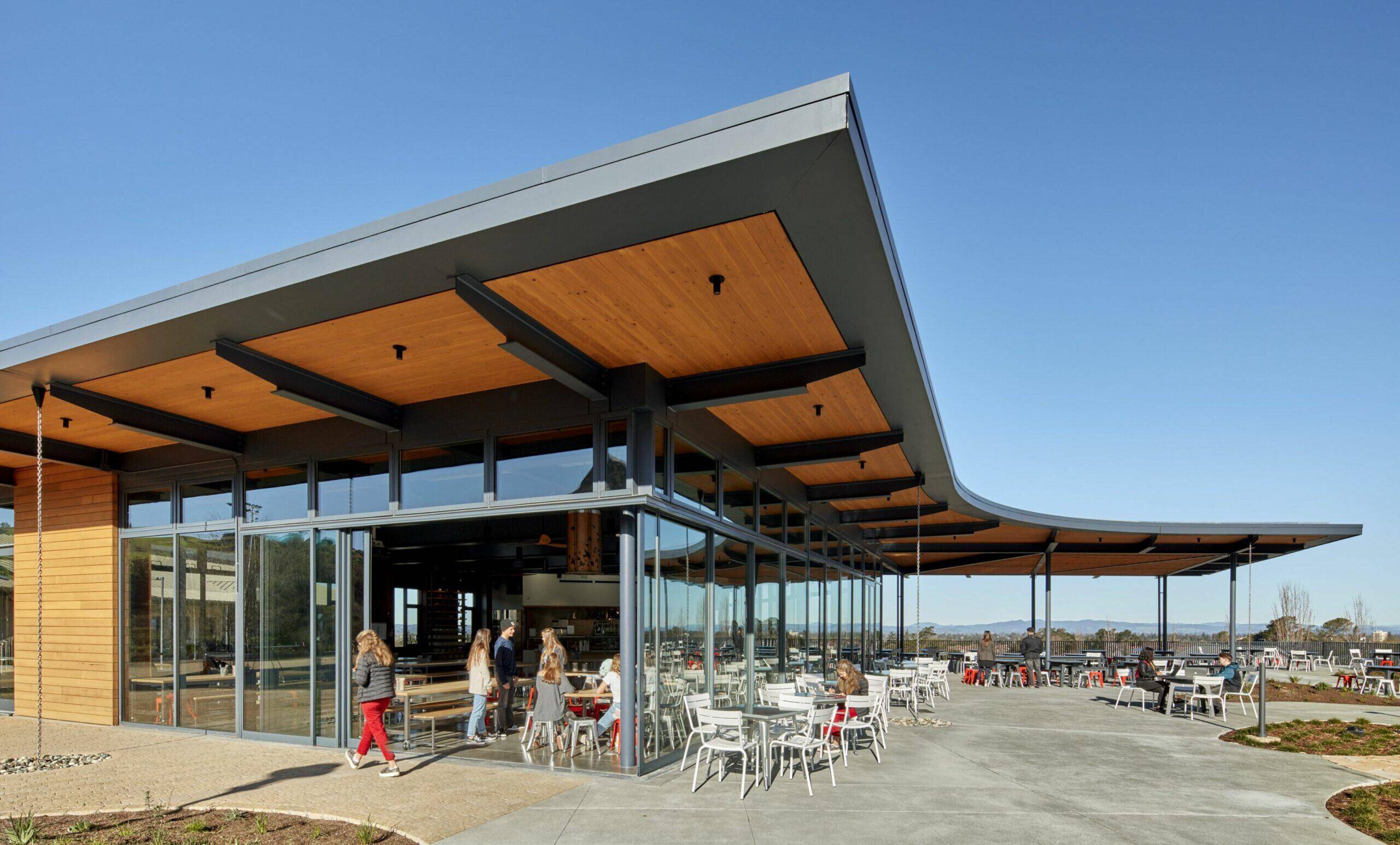
Common Ground High School | Photo Credit: David Sundberg/Esto

Founders Hall | LMN Architects |
Photo Credit: Tim Griffith

With the education construction market projected to grow by 4% in 2025—double the pace of overall nonresidential building—the sector represents an important opportunity for the lumber industry.


In Q1, Think Wood’s media partnerships became a key driver of outreach, generating 1,857 new audience members—making it a significant source of new leads for the quarter.

Think Wood stories about innovative residential projects have proven
to be an effective driver of engagement across all audience segments—residential and commercial alike.
Prospects to High Engagement

Frame 122 | Brent Buck Architects |
Photo Credit: Christopher Sturman
SLB Story 2
Light-frame wood construction accounted for 66% of WoodWorks’ reported project activity.
Broadstone Saratoga | Urban Architecture | Photo Credit: Chad Case Photography
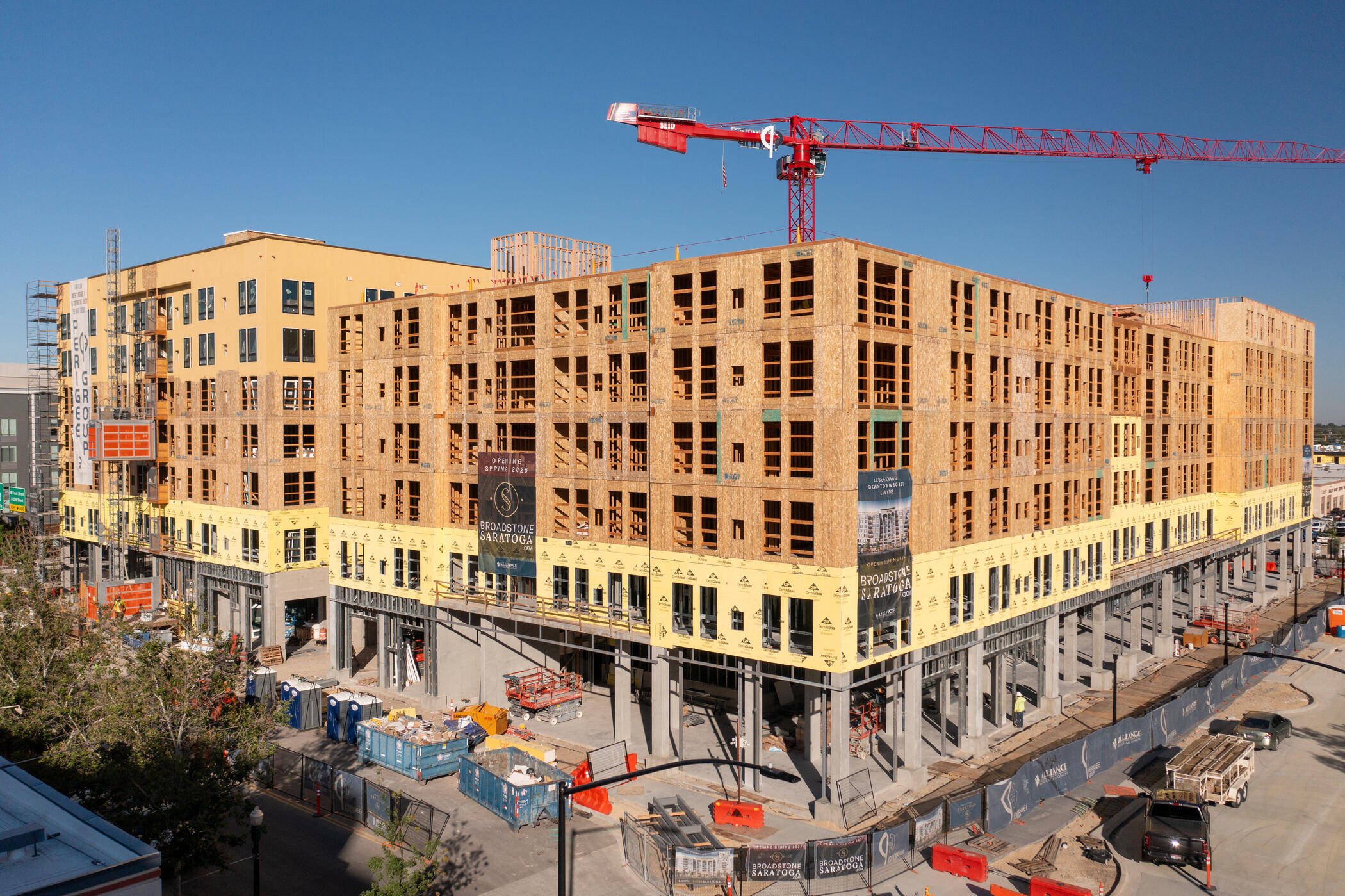
Education remains a key driver. One structural engineer, unsure if a five-story infill project exceeded height limits, relied on WoodWorks for code interpretation, occupancy strategies, and design classification—ultimately keeping the project within light-frame limits. With 5,445 professionals receiving light-frame education and 26 new project leads in Q1 alone, WoodWorks continues to expand the possibilities for light-frame construction and support practitioners as they scale up in size, complexity, and confidence.
In Q1, WoodWorks continued to play a pivotal role in advancing light-frame wood construction, which accounted for 66% of reported project activity and remains a cornerstone of the program’s outreach and education efforts. The organization provided critical early-stage support to a variety of projects across the United States, including a 370,571-square-foot multifamily development in Milwaukee. The project—built atop a precast concrete podium—includes both Type III-A and III-B light-frame buildings and required extensive guidance to align the design with code and construction best practices.
In Kansas City, a contractor new to mass timber received WoodWorks’ support for a 650,000-square-foot hybrid project combining four stories of light-frame walls with mass timber floors over a two-story podium. WoodWorks has found that enthusiastic contractors supported with the right resources can often stimulate regional momentum.
Retail Village at Sycamore and Oak,
Winstanley Architects | Photo Credit: Dror Baldringer
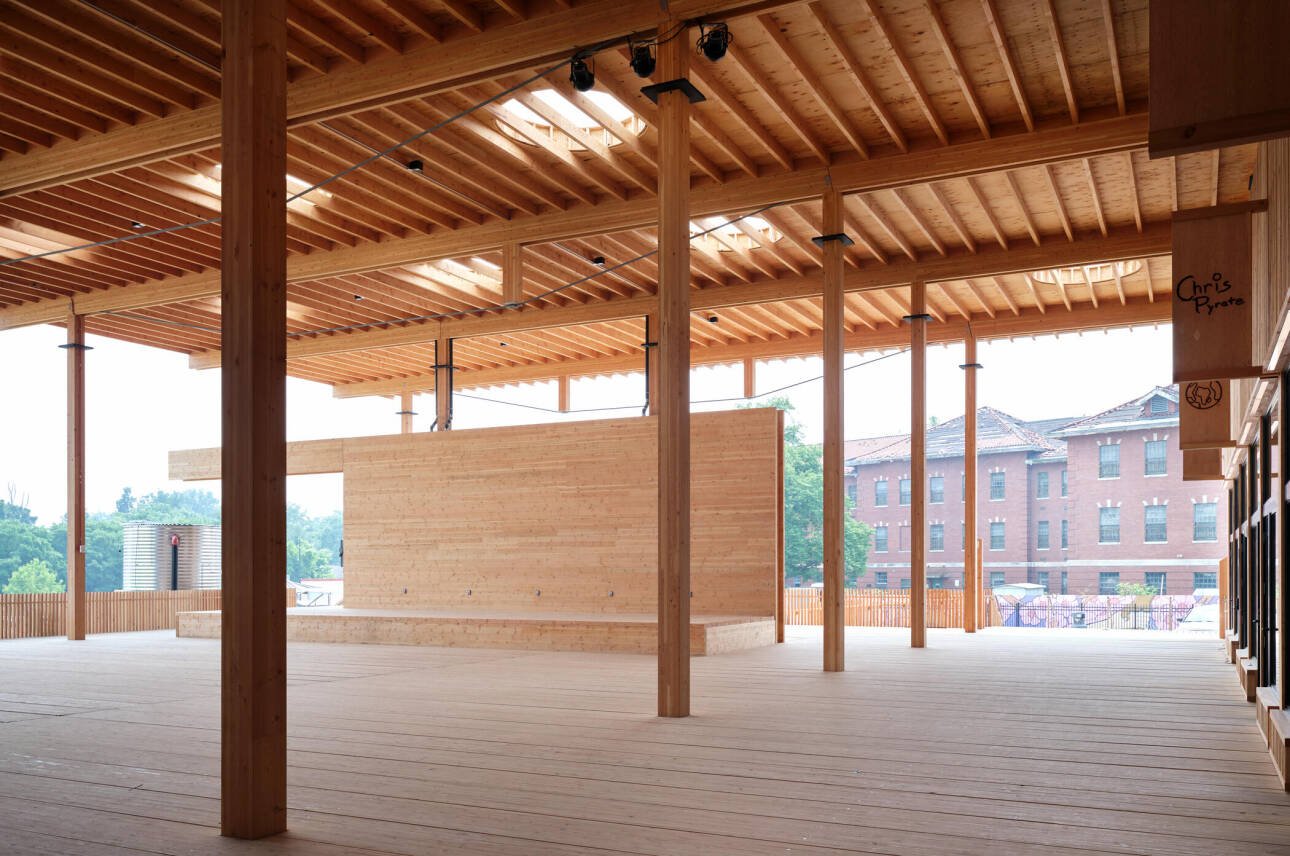
As demand for wood structural systems grows, WoodWorks is expanding its training efforts to better equip general contractors and construction workers with the skills needed to build those structures.


While economic uncertainty continues to have a drag on new construction starts, a recent survey by WoodWorks offers a cautiously optimistic outlook for wood building projects awaiting groundbreaking.
but Most Still Moving Forward

Attracting more than 3,000 architects, developers, engineers, and builders—half of which are first-time attendees—the International Mass Timber Conference has become the go-to event for professionals exploring the future of wood construction.
Innovation at Mass Timber Conference
Retail Village at Sycamore and Oak |
Winstanley Architects | Photo Credit: Dror Baldringer
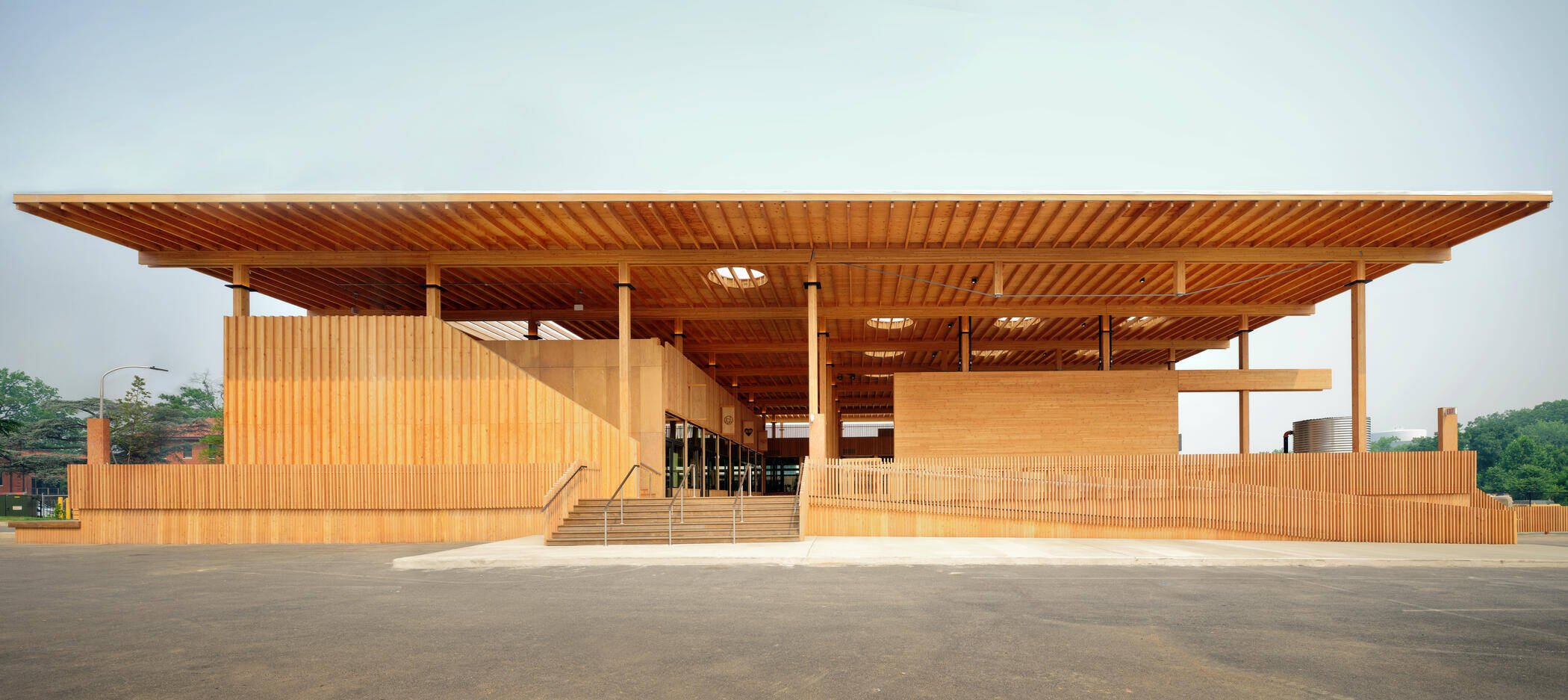
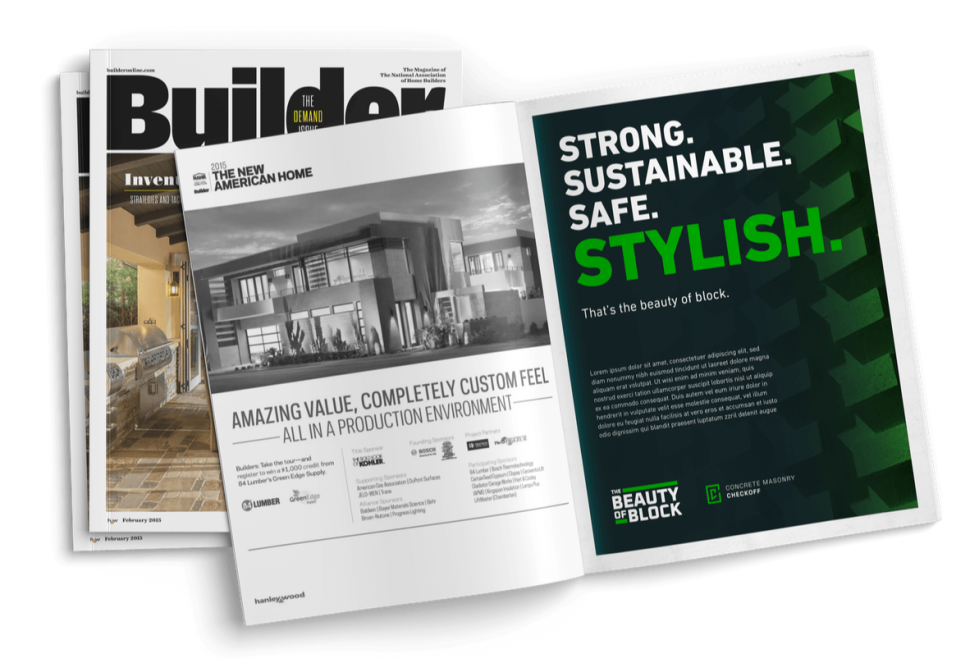
Codes & Standards
Research &
Development
$1,171,742
$1,262,610
$1,462,198
$2,667,900
National & Regional Checkoff Investments
$3,785,857
$1,821,030
Educating
Design Pros
Concrete
Masonry
Outreach
Design Assistance
Marketing


SLB story 3
The campaign includes a dedicated website and paid media placements
in trade publications to reach builders, designers, and developers.
On the education front, the CMC has established a University Education and Research Program, offering faculty workshops, masonry-focused curriculum development, and engagement tools for producers to connect with local academic institutions. A separate design summit has also provided continuing education for architects focused on masonry innovation.
SLB and program leaders continue to monitor the CMC’s rollout closely
and are developing strategic responses to protect and grow wood’s
market position.
Following its 2023 launch, the Concrete Masonry Checkoff (CMC)—the first checkoff program for a competing building material—has begun unveiling a suite of national programs designed to match and counter the SLB’s efforts in wood promotion. The initiatives are in marketing, design assistance, codes and standards, and education.
To compete with the SLB-funded codes work led by the AWC, the CMC has set up a Codes and Standards Program with experts in structural design, fire safety, energy, material science, and environmental technologies. The program will engage with both national forums and targeted state and local code jurisdictions. The CMC has also issued an RFP to find subject matter experts to provide direct project assistance, much like WoodWorks.
The CMC’s Beauty of Block marketing campaign, which debuted in August, mirrors SLB’s Think Wood by promoting concrete masonry’s benefits through five pillars: strength, safety, sustainability, savings, and style.
Museum of Fine Arts | Photo Credit: Peter Molick
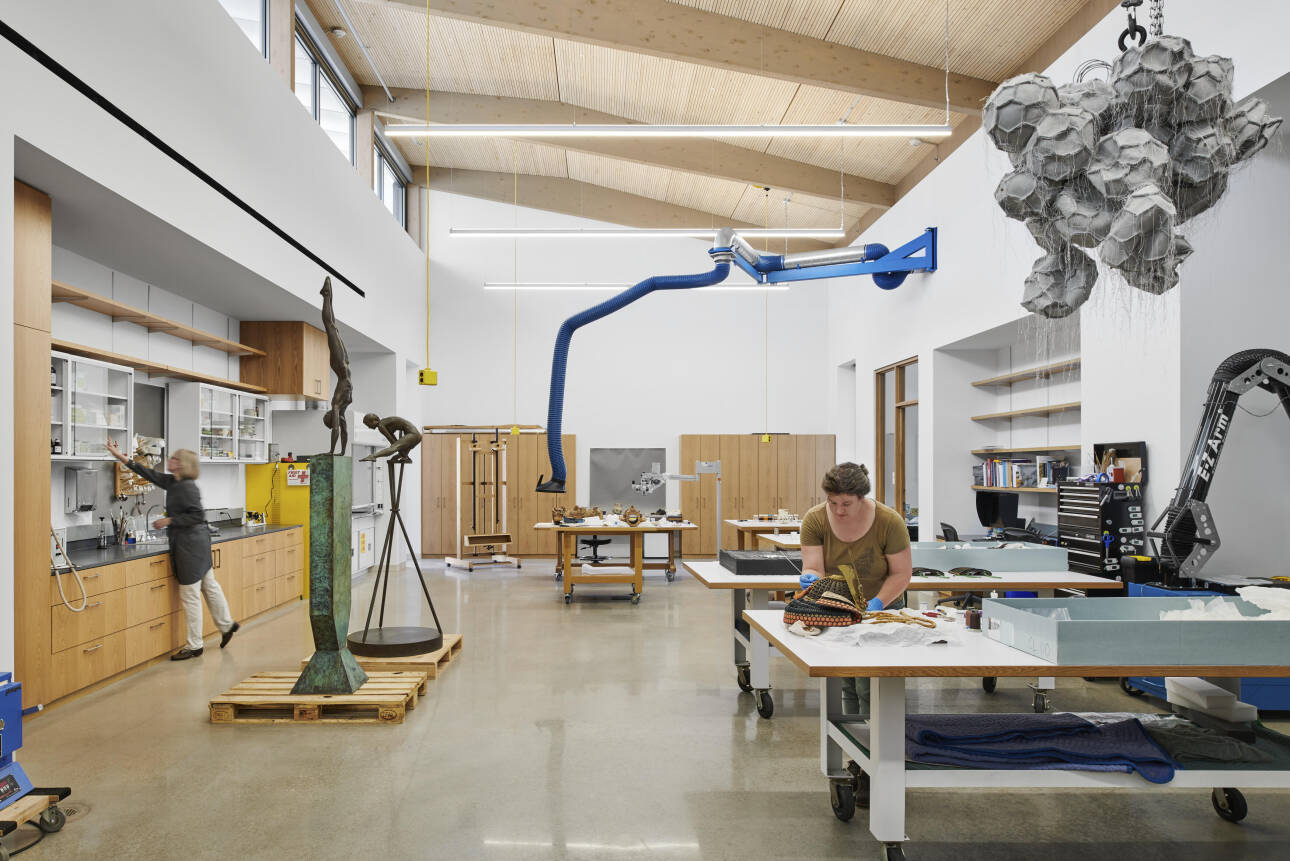

The AWC and the Construction Fire Safety Coalition (CFSC) have unveiled a newly redesigned CFSC website, signaling a refreshed commitment to fire safety on construction sites.
As the 2027 I-Code development process advances, the AWC is taking the lead in defending and expanding opportunities for wood construction.


After early January wildfires scorched 38,000 acres and caused an estimated $100 billion in damages, California’s wildland-urban interface (WUI) has become a national focus.

Children's Day School | Jensen Architects |
Photo Credit: Bruce Damonte
If you'd like a printed version of the Q1 Report mailed
to you, please email info@softwoodlumberboard.org.
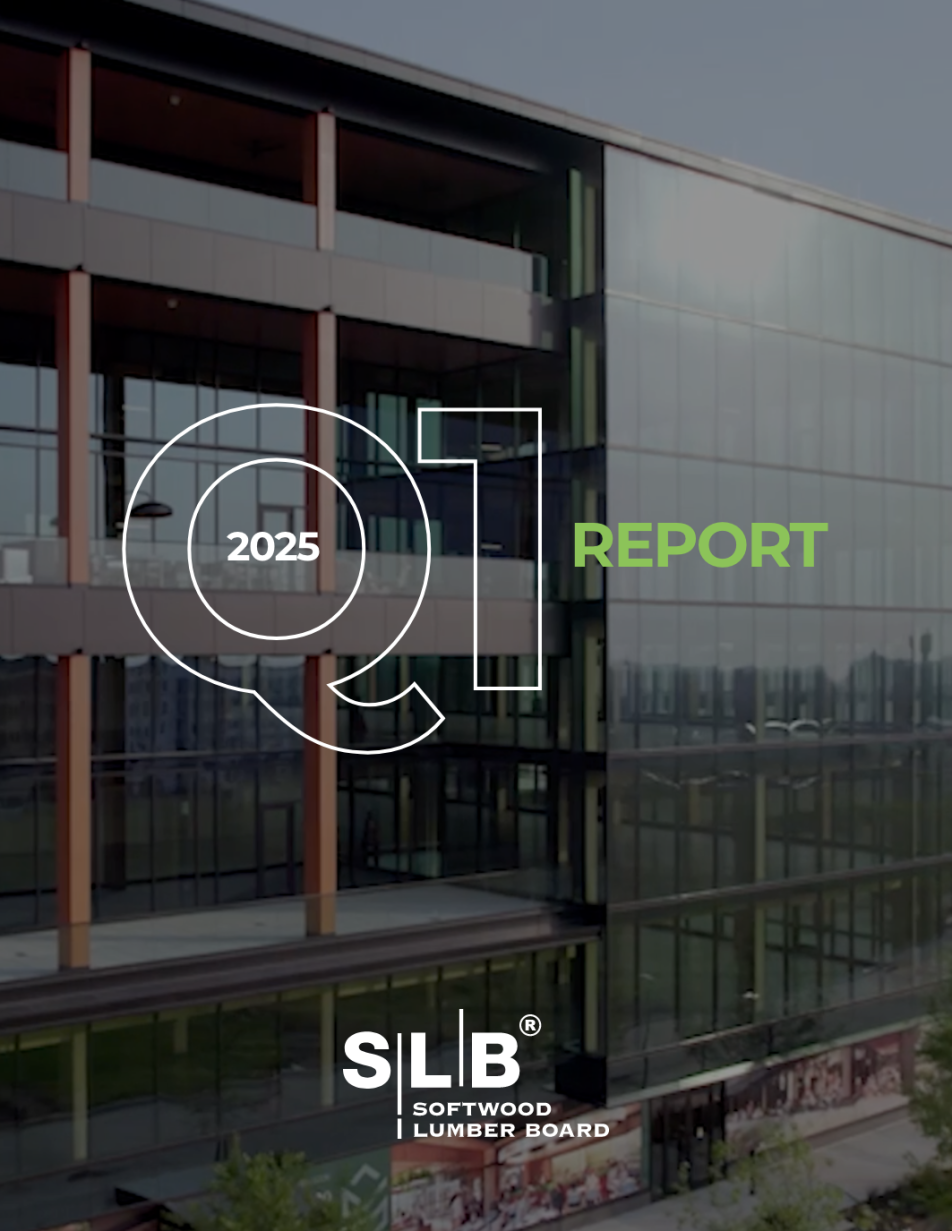








& Mass Timber



1,510 MM BF
2025 goal.

Q1 HIGHLIGHTS
SLB Story 3:
Concrete Masonry Checkoff Updates
Want to read more SLB stories?
Jump to these stories.
SLB Story 2:
Light-Frame Market Growth
SLB Story 1:
K-12 Mass Timber Competition
One finalist in NYCEDC’s Mass Timber Studio has been selected
to construct 500 mixed-income homes on Staten Island.
Rendering Credit: GF55 Architects.
The Brooklyn Public Library Lots Branch, selected in the first round of NYCEDC’s Mass Timber Studio, is expected to break ground in 2025. Rendering Credit: MASS Design Group and Marble
Fairbanks Architects
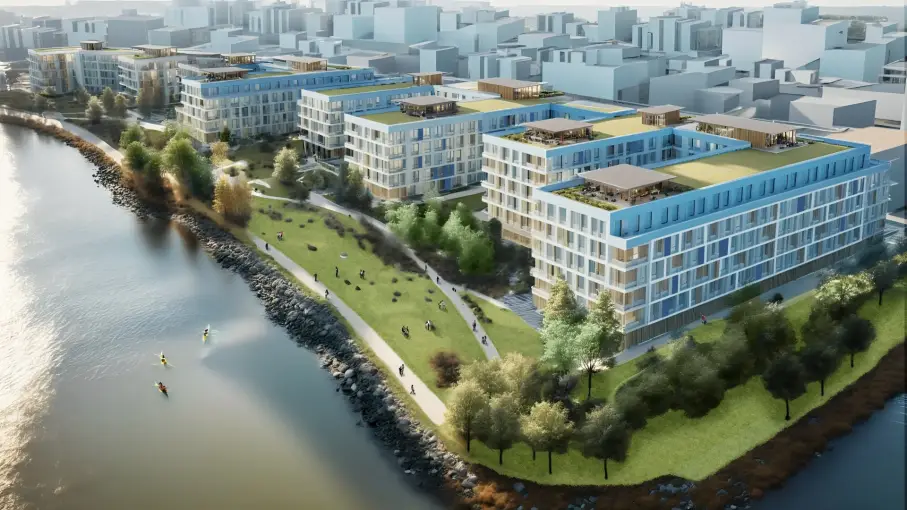
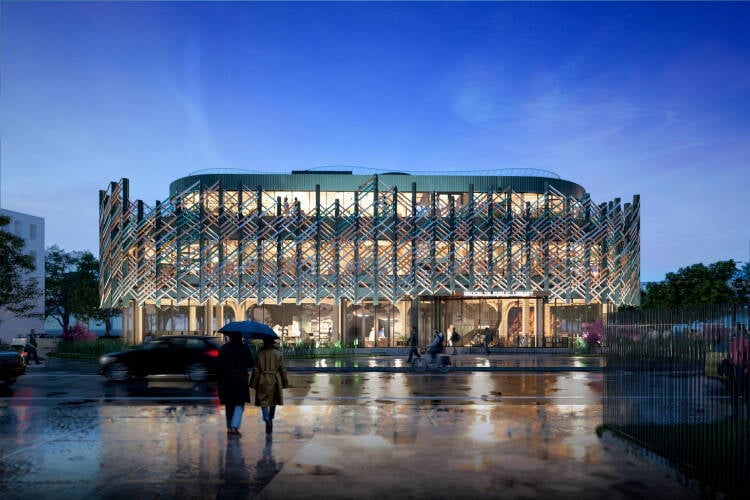
Georgia’s Mass Timber Accelerator, managed by the Georgia Forestry Foundation, is providing direct funding and technical support to three active projects. The accelerator launched a new call for applications and is expanding into key urban centers through its Mass Timber Hubs initiative. These educational hubs in cities throughout Georgia, developed in partnership with WoodWorks, aim to engage local design and construction professionals to share success stories, discuss lessons learned, and grow momentum ahead of the June 30 application deadline.
Building on these successes, the SLB is encouraging more cities to apply for funding and support to launch their own accelerators, positioning wood structural systems as a key solution for sustainable, scalable, and affordable development across the United States.
In 2025, the SLB is expanding its accelerator program initiative to drive innovation in wood construction with a focus on affordability and housing access. Building on the success of programs in Boston, Georgia, and New York City—launched in partnership with the USDA Forest Service—the SLB is now exploring collaborations with cities in Colorado, Pennsylvania, Oregon, and California, and in Washington, D.C.
In New York, two projects from the NYC Economic Development Corporation’s 2024 Mass Timber Studio have moved toward construction: the Walter Gladwin Recreation Center and a Brooklyn Public Library branch, both expected to break ground in 2025. A second round of applications for the program closed in April, and the SLB and program partners have reviewed and selected finalists. One of the finalists has been selected to construct 500 new mixed-income housing units on Staten Island, becoming one of the largest mass timber residential development projects with affordable housing in the entire country.
Grow Wood’s Market Share in 2025

Community MusicWorks Center Architecture |
3SIX0 Architecture | Photo Credit: Warren Jagger Photography



Explores Robotic Wood Construction

Wood Design
Sonoma Academy | Photo Credit: Michael David Rose
Common Ground High School | Photo Credit: David Sundberg/Esto


The SLB and USDA Forest Service’s 2025 Mass Timber Competition: Building Sustainable Schools has drawn 19 innovative project entries from across the country, signaling growing momentum for mass timber in the K-12 education sector. With $1.8 million in funding available—up to $500,000 per project—the competition is designed to accelerate adoption, grow market share, and showcase mass timber’s potential to transform how schools are built.
By focusing on classrooms, libraries, daycare centers, and other K-12 facilities, the program targets a high-demand sector where wood’s current market share is low, leaving ample room to increase wood use with an annual incremental lumber opportunity ranging from 203 MM BF to 1.5 BBF as wood’s market share grows. The competition funding supports early-stage costs, such as analyzing design alternatives and code compliance studies—critical steps for overcoming barriers and mainstreaming mass timber solutions. A panel of leading architects, engineers, and school construction experts will select finalists by June 25, with winners announced in October.
Previous competitions are already yielding showcase projects. Of the 12 past awardees, nine are progressing through design or construction. Notably, Evergreen Charter School in Hempstead, New York, has completed construction and begun a biophilia impact study. Up@310 Lofts, a residential vertical extension in Keene, New Hampshire, and Via Emma, a Northwest Arkansas multifamily development using modular construction, are expected to finish in 2025.
This sector-specific competition builds on growing trends: nearly 80% of education projects supported by WoodWorks between 2021 and 2024 incorporated mass timber. As more teams pursue sustainable, low-carbon materials, K-12 construction is becoming a key driver of wood’s market growth.
Attracts Innovative Project Entries
Frame 122 | Brent Buck Architects | Photo Credit: Christopher Sturman





and single-family home design and build resources to architects, developers, and contractors.
Light-frame wood construction accounted for 66% of WoodWorks’ reported project activity.
Broadstone Saratoga | Urban Architecture | Photo Credit: Chad Case Photography

In Q1, WoodWorks continued to play a pivotal role in advancing light-frame wood construction, which accounted for 66% of reported project activity and remains a cornerstone of the program’s outreach and education efforts. The organization provided critical early-stage support to a variety of projects across the United States, including a 370,571-square-foot multifamily development in Milwaukee. The project—built atop a precast concrete podium—includes both Type III-A and III-B light-frame buildings and required extensive guidance to align the design with code and construction best practices.
In Kansas City, a contractor new to mass timber received WoodWorks’ support for a 650,000-square-foot hybrid project combining four stories of light-frame walls with mass timber floors over a two-story podium. WoodWorks has found that enthusiastic contractors supported with the right resources can often stimulate regional momentum.
Education remains a key driver. One structural engineer, unsure if a five-story infill project exceeded height limits, relied on WoodWorks for code interpretation, occupancy strategies, and design classification—ultimately keeping the project within light-frame limits. With 5,445 professionals receiving light-frame education and 26 new project leads in Q1 alone, WoodWorks continues to expand the possibilities for light-frame construction and support practitioners as they scale up in size, complexity, and confidence.
Light-Frame
Market Growth
Retail Village at Sycamore and Oak |
Winstanley Architects | Photo Credit: Dror Baldringer

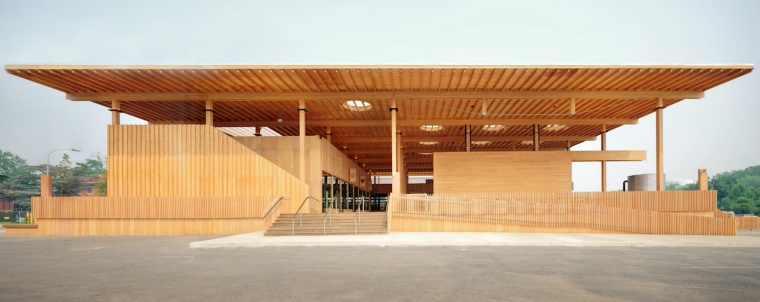


but Most Still Moving Forward


Codes & Standards
$1,821,030
National &
Regional
Checkoff
Investments


64
Total Programs
$12,171,337
Total Funding
CMC Funding
Following its 2023 launch, the Concrete Masonry Checkoff (CMC)—the first checkoff program for a competing building material—has begun unveiling a suite of national programs designed to match and counter the SLB’s efforts in wood promotion. The initiatives are in marketing, design assistance, codes and standards, and education.
To compete with the SLB-funded codes work led by the AWC, the CMC has set up a Codes and Standards Program with experts in structural design, fire safety, energy, material science, and environmental technologies. The program will engage with both national forums and targeted state and local code jurisdictions. The CMC has also issued an RFP to find subject matter experts to provide direct project assistance, much like WoodWorks.
The CMC’s Beauty of Block marketing campaign, which debuted in August, mirrors SLB’s Think Wood by promoting concrete masonry’s benefits through five pillars: strength, safety, sustainability, savings, and style.
The campaign includes a dedicated website and paid media placements in trade publications to reach builders, designers, and developers.
On the education front, the CMC has established a University Education and Research Program, offering faculty workshops, masonry-focused curriculum development, and engagement tools for producers to connect with local academic institutions. A separate design summit has also provided continuing education for architects focused on masonry innovation.
SLB and program leaders continue to monitor the CMC’s rollout closely and are developing strategic responses to protect and grow wood’s
market position.
Education, Marketing, Codes Programs

Children's Day School | Jensen Architects |
Photo Credit: Bruce Damonte



Opportunities for Wood in
2027 Codes

of the Impact of the SLB
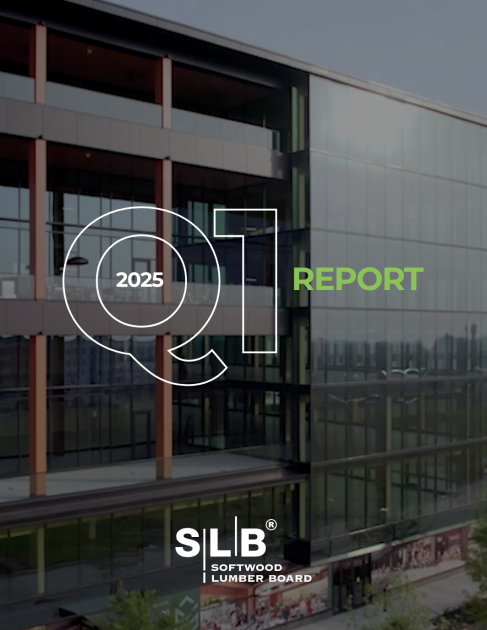

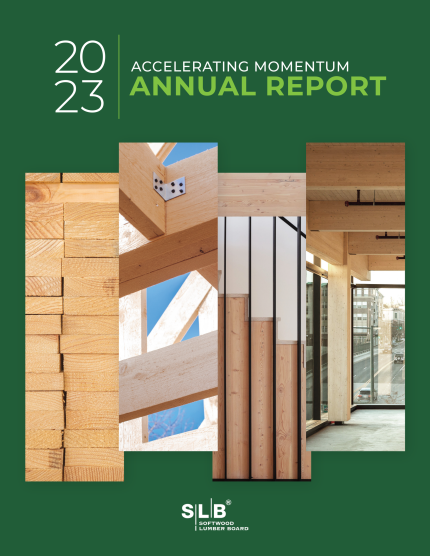
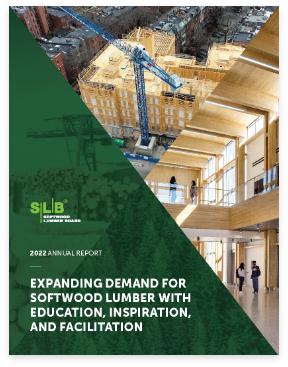


If you'd like a printed version of the
Q1 Report mailed to you, please email info@softwoodlumberboard.org.


